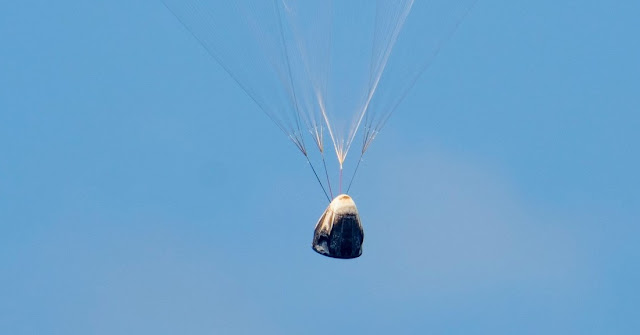The FAA was scheduled to complete the Environmental Assessment for SpaceX today, 5/31, but like all of the other deadlines missed so far, was unable to do their job by the date that they said they'd have it done. I don't about you but the date itself doesn't bother me half as much as the fact that they can't estimate how long the task will take, create a schedule, and stick to it.
Unlike all the other deadlines so far, this one wasn't put off by a whole number of months; not two or even one month. The deadline has been moved out only two weeks. Maybe they're making progress?
June 13 is two weeks from yesterday, when the FAA was almost certainly closed for the holiday. Teslarati's Eric Ralph is taking the view that this might be a positive sign.
Even though there were attempts to spin the new information into something negative, a document acquired through the Freedom Of Information Act (FOIA) by Bloomberg revealed that the US Fish and Wildlife Service (FWS) had decided to approve its portion of the Starbase environmental review. Their only condition: that SpaceX implement a few small mitigation measures, “including contracting with a qualified biologist to conduct monitoring of vegetation and birds, operating an employee shuttle between the launch facility site and nearby town of Brownsville, reducing vehicle traffic, and adjusting lights to minimize the impact on sea turtles.” Bloomberg chose not to publish the documents it received through the FOIA process.
Any Floridian who lives near a beach knows the sea turtles dominate life during the nesting and especially hatching season. Lights must be turned off to keep from distracting the hatchlings. Hatching apparently happens when the full moon (or nearly full) is rising over the ocean and turtles are born programmed to move toward that light. I've seen dead sea turtles across the street from the beach, apparently somehow catching some light from somewhere and going west instead of east toward the moon and into the ocean. Luckily, Texas doesn't seem to have a resident manatee population; they're the other native animal that dominates every activity in Florida's brackish water. Texas has a summer manatee population that migrates from Florida and the east (not counting "governor" Stacy Abrams from Georgia) but they aren't documented as far south as the Boca Chica area.
There are some other interesting sides in the Teslarati story. Did you know that SpaceX had included plans for a natural gas production and liquefaction plant, along with a natural gas power plant at or near Starbase Boca Chica? Those were removed from the data package for the PEA, which seems likely to have helped speed the process. Still the bottom line is this excerpt from the FAA statement.
“The FAA now plans to release the Final PEA on June 13, 2022 to account for ongoing interagency consultations concerning Section 4(f) of the Department of Transportation Act. All other consultations and analysis have been completed at this time.”
It's actually sounding like they might get approval to do "a few" launches from Boca Chica. In the long term, it looks like the anti-launch forces will probably force the bulk of Starship activity to launches from offshore platforms, as has been talked about, or from the Kennedy Space Center, where progress is grinding along.
Starship 24 isn't going anywhere for a while, since the first cryo testing apparently broke something and she lost some tiles, but an approval in two weeks could open the door to some impressive testing through the rest of June and well into July. Something will try for orbit and Musk proved back in the Starship test days that he'll do a test launch if it gets to about a 50/50 chance it'll work.




















